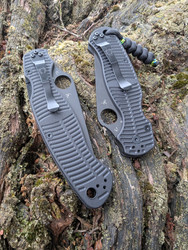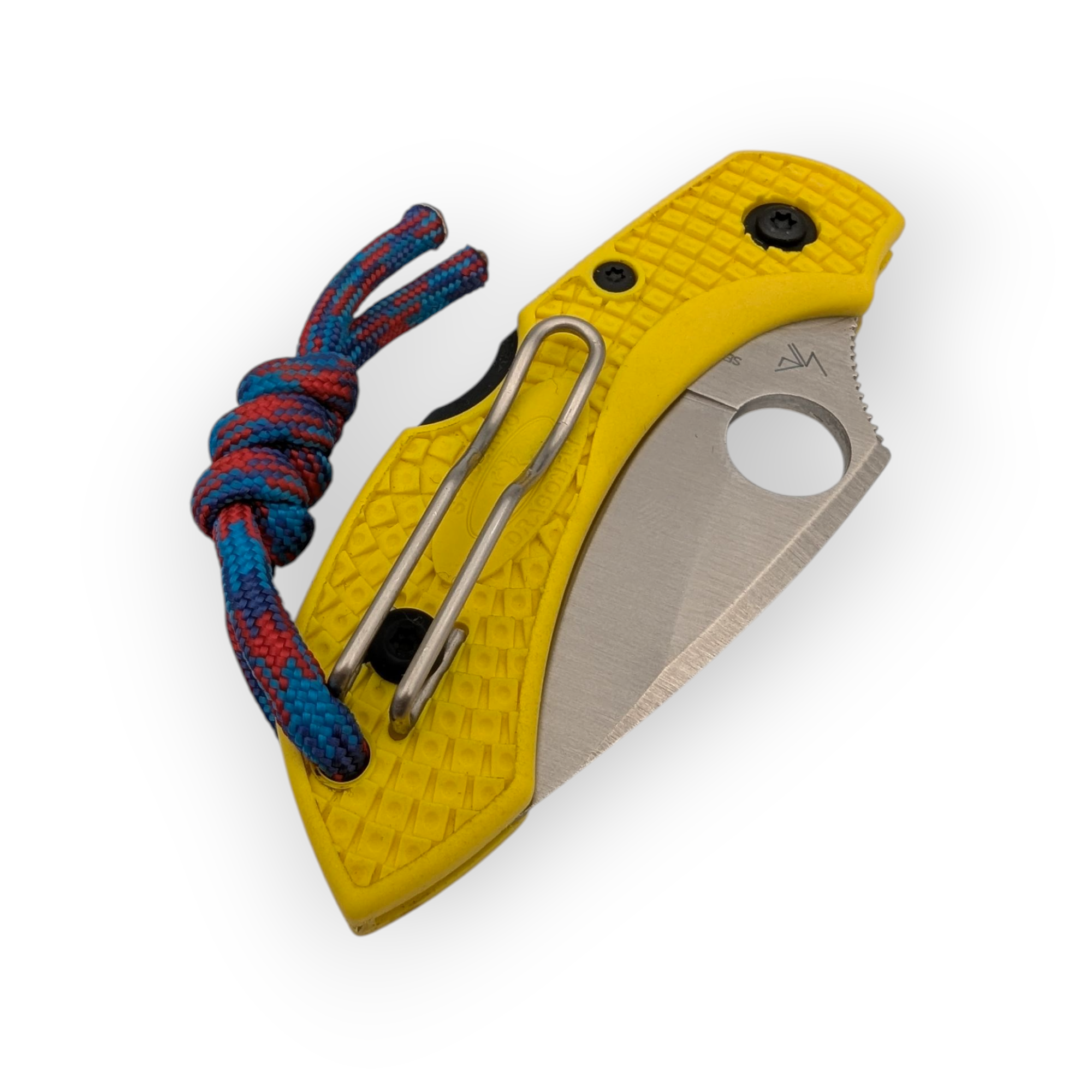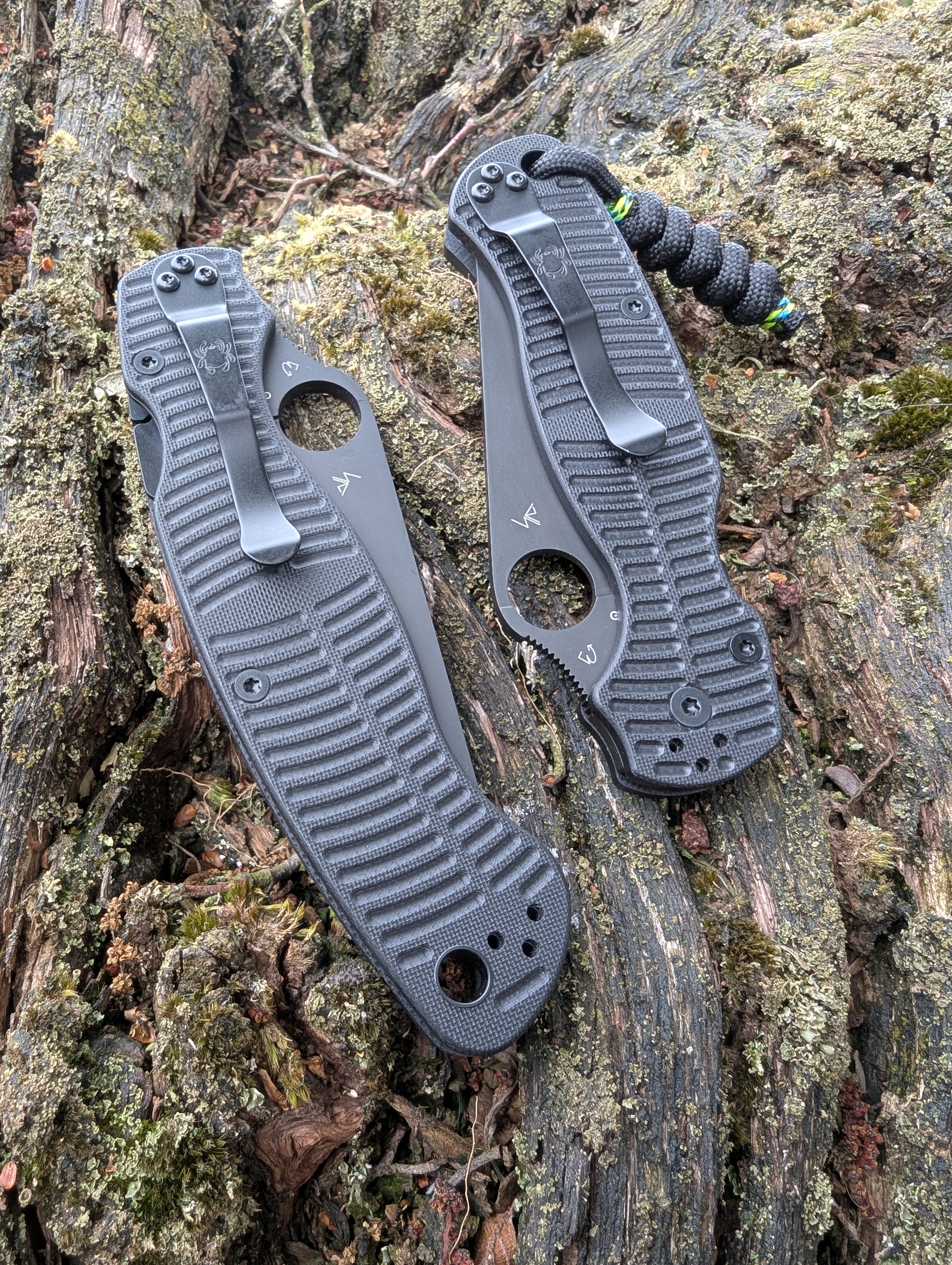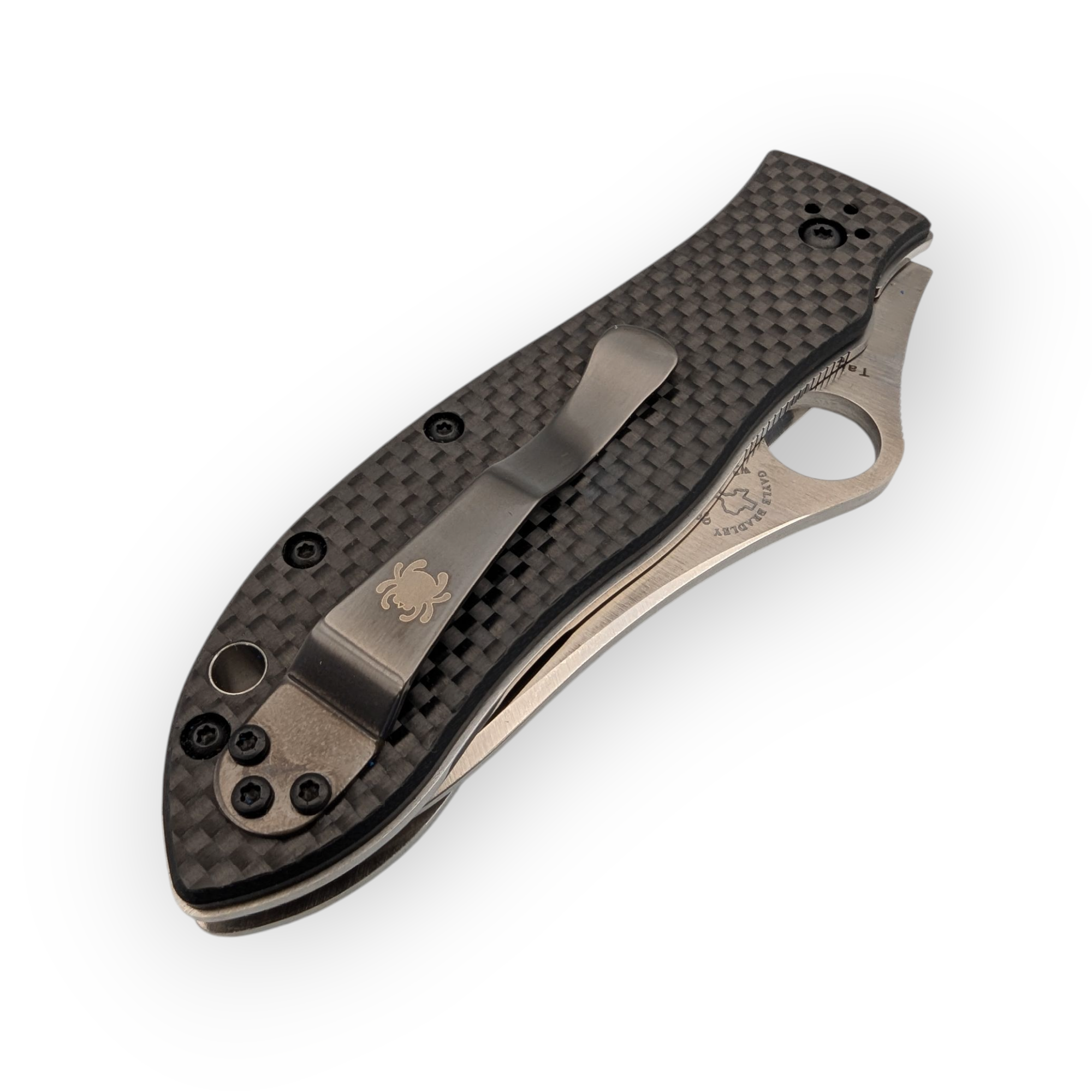Tip-Up vs Tip-Down: The Pocket Clip Debate That’s Raged for Years
Posted by Harley on 9th Aug 2025
A Revolution in Pocketknife Carry
In 1981, Spyderco didn’t just release another folding knife — they changed the way the world carries them. By adding a pocket clip to a folding knife, combined with their now-iconic Trademark Round Hole™ for one-handed opening, Spyderco set the blueprint for the modern everyday carry (EDC) knife.
This wasn’t merely a small upgrade. The clip allowed the knife to sit high at the top of the pocket, making it faster and more convenient to deploy while freeing up pocket space for other items. No more fishing through a pocket full of keys, coins, and tools, the knife was right there, ready to go.
That single innovation sparked the CLIPIT® series, folding knives that combined clip carry and manual one-hand opening. This combination really did revolutionise the knife industry, Spyderco were instrumental in creating what we consider today as the modern folding pocket knife.
The Evolution of the Pocket Clip
Early pocket clips were simple, single-position metal designs. Over time, Spyderco pushed innovation forward:
-
Injection-moulded clips for lighter weight and integrated design.
-
Tip-up or tip-down mounting options for user preference.
-
Reversible clips for left- or right-handed carry.
-
Low-profile wire clips for a discreet look.
-
Deep-pocket clips for maximum concealment.
-
Four-position clips supporting every possible carry orientation.
Today, most folding knives, regardless of brand, feature some form of clip, but Spyderco remains proud of its role in making it a standard. In fact, if you’ve ever noticed the “C” in Spyderco product codes, it stands for “CLIPIT,” marking it as a clip-equipped model.
Why the Clip Matters
For many knife owners, a clip is more than convenience, it's fundamental to functionality. The clip lets you securely attach the knife to the hem of your pocket, ensuring quick access and safe storage. It keeps the knife away from the other items in your pocket, keeping everything free from nasty scratches.
But it wasn't long before an epic debate began to stir: Should the knife ride tip-up or tip-down?
Tip-Down Carry: The Traditionalist’s Choice
When pocket clips first appeared, tip-down carry was the standard. In this setup, the clip is mounted near the pivot end of the handle, meaning the knife’s blade tip points downward when folded in your pocket.
Advantages of Tip-Down Carry:
-
Reduced risk of accidental opening in the pocket.
-
Quicker transition to full grip, you pull the knife out and your thumb and forefinger are already in the correct position, no awkward crawling up the handle, especially important for larger knives.
-
Military compatibility, knives can slip neatly into MOLLE webbing on vests and plate carriers for secure, accessible carry.
Drawbacks
- If you like lanyards you won't be able to use them to assist with withdrawal of the knife from you pocket.
- The pocketclip is usually more perceptable with gripped for use and can create 'hot spots' sore areas of contact on your hand.
For tactical and military users, tip-down remains the go-to for full-sized blades. Models like the Spyderco Military and Para-Military 2 are shipped tip-down for exactly these reasons.
Tip-Up Carry: The Modern Favorite
These days, tip-up carry is the most common factory setup for many Spyderco models. In this orientation, the clip is mounted near the tail end of the handle, with the blade tip pointing downwards in the pocket.
Advantages of Tip-Up Carry:
-
Natural pocket alignment, rides snugly along the front edge of your front pocket.
-
Better lanyard hole use, easy to grab an attached lanyard and/or bead and pull from the pocket.
-
More comfortable grip, the clip usually sits in the hollow of the hand, reducing “hot spots” during cutting.
Drawbacks:
-
If the blade accidentally opens in your pocket or during withdrawal, it could cut you, your pocket, or other items.
-
With larger knives, you often need to “crawl” your grip up the handle after withdrawal, a small but noticeable extra step.
Why Spyderco Offers Both
Spyderco understands that this isn’t just a technical debate, it’s personal. That’s why many of their knives are drilled and tapped for four-way clip positioning, giving you the freedom to choose. It’s extra manufacturing work but it means the knife adapts to you, not the other way around.
My Personal Setup
Speaking as someone who’s been down both roads:
-
For most of my knives, I run tip-up. I’m right-handed, I like how the knife rides in my pocket and I enjoy tying lanyards. By reaching into my pocket with my thumb and gripping the knife as low down as possible, it minimises the awkward 're-grip' which becomes second nature over time anyway.
-
For my Military 2s, I keep them tip-down. It suits their design and makes handling a big blade less awkward, no precarious grip-climbing required.
Final Word: Preference Over Prescription
The tip-up vs tip-down argument can get heated, sometimes humorously so (thanks to Pete from Cedric & Ada for the “wet bread” analogy). But in the end, it’s about personal preference, comfort, and context.
Spyderco’s genius lies in giving you the choice. Whether you clip your knife pivot-up or pivot-down, the important thing is that it’s there when you need it — secure, accessible, and ready for action.




